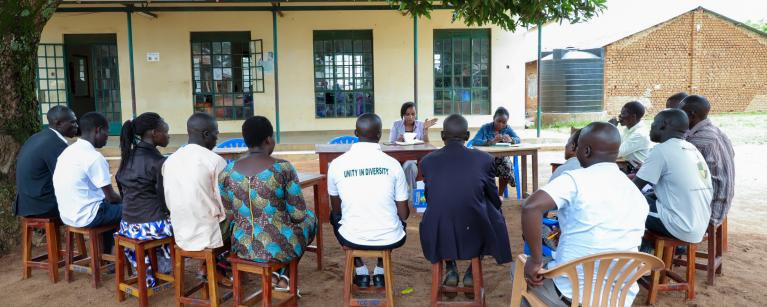At Lodonga Polytechnic Institute in Yumbe district, an innovative approach is transforming how teachers teach and students learn.
Teacher Learning Circles (TLCs) are small, collaborative groups created at learning institutions where teachers meet regularly to reflect on their teaching practices, share experiences, and support each other’s growth. The aim is to improve student learning outcomes.
With funding from the Danish International Development Agency (DANIDA), Oxfam in Uganda introduced the TLCs at Lodonga Polytechnic Institute-one of the three vocational training institutes supported under the Education component of the Humanitarian Development and Peace (HDP) Initiative project in the West Nile to improve the quality of learning content received by students.
The TLCs were introduced to help bridge gaps in teacher training and improve the quality of education. Following a 2022 needs assessment, which revealed significant gaps in teacher skills, Oxfam launched TLCs at Lodonga and other institutes. The 25-member TLC includes instructors from a range of disciplines, such as mechanics, engineering, carpentry and joinery, Fashion and Design, Building Construction and Computer Applications. Many of these instructors had the technical expertise to teach those courses but lacked formal teaching experience.
“The TLCs came up timely to iron out those challenges amongst the instructors,” says Samson Andebo, Lodonga’s principal. “We admit students from primary seven and senior four and six. We try to recruit some of these students as instructors when they complete their courses, but many have no formal teaching training. The TLCs have given them an opportunity to organize themselves and improve their teaching.”
Samson further adds,‘’Some of the instructors/teachers finished long time ago while others are fresh from colleges, each taught using different methods, so the TLC are refresher courses to put all the instructors at the same alignment.
The impact of TLCs is already clear. Instructors have reported gaining fresh insights into lesson planning and classroom management. “Through interactions in TLCs, we identify simplified formats, well suited to ease learning for the students,” explains Vincent Titia, an instructor in mechanics. "We’ve learned how to create organized schemes of work and lesson plans."
For instructors like Hilary Amayo, who specializes in computer applications, the benefits go beyond technical skills.
‘’As a person from engineering and IT, I have not been trained as a teacher, he reflects. “I have realized that when you are a teacher, in society, there is an element that is emulated from you, and therefore, there are principles to observe which I had never considered before.”
The results are impressive.
“When I compare the performance of last term in 2023 and this term, there is an improvement in the performance of the learners – in our department of Mechanics, we have 70 students, this term we had no retakes while last term, out of 70 students, 50 had credits while others had retakes.”
Lodonga offers both formal and informal programs, with many students opting for short-term (3 months) vocational courses like tailoring, electrical installation, plumbing, and hairdressing.
The vocational training does not only equip students with knowledge, but students are able to start their own employment.
According to Samson, at least 60% of the students can create their own employment while others are employable because they meet the skills needed on the job market.
As TLCs continue to enhance both teaching and student performance, Andebo believes this model could be replicated in other vocational institutes facing similar challenges. With the success seen at Lodonga, there is hope that this collaborative, teacher-driven approach will lead to improved education outcomes across the region.

